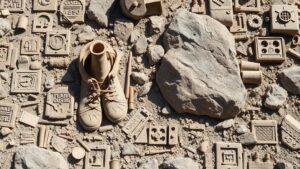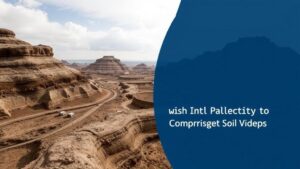How to Fine-Tune Advanced Ground Balance on Volcanic Soils
Understanding the Importance of Ground Balance in Metal Detecting
Ground balance is a critical aspect in the field of metal detecting, particularly when working with challenging soil types such as volcanic soils. Ground balance refers to the ability of a metal detector to ignore mineralization present in the soil, thus focusing on the detection of metallic objects. This is especially important in volcanic regions, where ground mineralization can be significantly higher due to the presence of diverse mineral compositions. Failing to properly adjust ground balance can lead to false signals and missed targets.
The Unique Challenges of Volcanic Soils
Volcanic soils provide unique challenges for metal detecting due to their varied mineral content and geological formations. The minerals found in volcanic soils–such as magnetite, ilmenite, and various volcanic glass–can interfere with a metal detector’s performance by creating strong electromagnetic fields. These fields can mask or distort the signals produced by buried metals.
The Composition of Volcanic Soils
Volcanic soils are characterized by their high level of minerals, primarily derived from the weathering of volcanic rock. key components include:
- Magnetic minerals: Such as magnetite, which can lead to erroneous readings.
- Silicate minerals: Found in high concentrations can impact signal reception.
- Organic matter: Also prevalent in soil layers can contribute to soil complexity.
Understanding Ground Balance Settings
Metal detectors often come with automatic and manual ground balance settings. The choice between these can significantly affect performance in complex soils. Automatic ground balance adjusts to the soil conditions but may not provide the accuracy needed in volcanic areas. Hence, understanding and configuring manual ground balance settings becomes critical.
How to Fine-Tune Advanced Ground Balance
Step 1: Assess Soil Conditions
Before initiating ground balance adjustments, it is crucial to assess the soil conditions. This can include:
- Conducting a visual inspection of the ground for color and texture.
- Carrying out small test digs to understand the mineral composition.
- Using a handheld metal detector to gauge false readings in the area.
Step 2: Use the Ground Balance Adjustment Feature
Once the soil conditions are understood, it’s time to utilize the ground balance adjustment feature on your metal detector:
- Set the detector to manual ground balance mode, if available.
- Adjust the balance while monitoring the detectors response to the ground.
- Begin by lowering the detector to just above the ground and make fine adjustments until the detector is silent, indicating that the mineralization is effectively being negated.
Step 3: Conduct Field Tests
Field testing is essential to verify the effectiveness of ground balance adjustments. It is advisable to:
- Test different areas with varying mineral concentrations to refine settings further.
- Section off smaller areas, conducting multiple sweeps to ensure consistent performance.
- Keep notes on various settings for reference during future excavations.
Step 4: Consider Environmental Factors
Environmental factors can significantly affect detection capabilities, including:
- Moisture content of the soil, which can vary results.
- Vegetation cover, which may impact electromagnetic readings.
- Weather conditions that can alter the properties of volcanic materials.
Case Study: Successful Ground Balance Adjustments in Hawaii
One illustrative case comes from an archaeological survey in Hawaii, where researchers were utilizing metal detectors to locate historical artifacts in volcanic soil. Initially faced with numerous false signals, they utilized a detailed ground balance methodology that involved:
- Manual adjustments based on specific mineral evaluations from test digs.
- Layered approaches to understand how different soil depths affected readings.
- Extensive documentation of variables that contributed to signal disruption.
Following these adjustments, the team successfully uncovered several significant artifacts that were previously missed–demonstrating the importance of fine-tuning ground balance in challenging soils.
Actionable Takeaways
To effectively fine-tune advanced ground balance on volcanic soils:
- Conduct thorough site evaluations to understand specific mineral challenges.
- Use manual ground balance adjustments for more precise control.
- Engage in rigorous field testing across different conditions.
- Document settings and outcomes for ongoing knowledge building.
By following these steps, metal detecting enthusiasts and professionals can enhance their chances of successful finds in the mineral-rich landscapes of volcanic regions.



